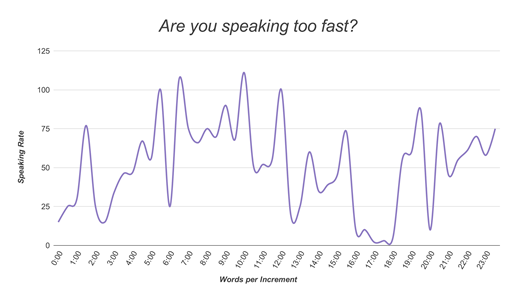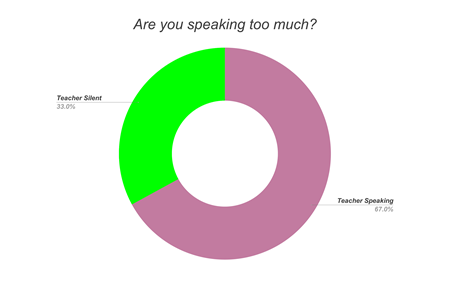Slow Down: Why You’re Speaking Too Fast
Topics

Educators often take advantage of educational technologies as they make the shifts in instruction, teacher roles, and learning experiences that next gen learning requires. Technology should not lead the design of learning, but when educators use it to personalize and enrich learning, it has the potential to accelerate mastery of critical content and skills by all students.
When teachers can quickly see how fast they talk in the classroom, they can apply that feedback to create a more effective learning environment for students.
Imagine back to a time—perhaps high school or middle school—when you were studying a new language for the first time. You memorized your vocabulary and practiced your accent, but when you had to listen to an audio recording or a TV program, it was as if you understood nothing at all.
“This person is speaking too fast,” you would say, “and I just can’t decipher the words and phrases I need to understand them.” As a teacher, you may be doing the very same thing in the classroom every day.
Educating Requires You to Connect with Your Students
As a teacher, when your goal is to transfer knowledge, you first have to connect with students who have different learning styles (e.g., visual, auditory, kinetic, etc.) and different abilities to process information. A key resource in your toolkit is the rate at which you’re speaking. Here are just two of the reasons why speaking too fast can be detrimental to student achievement:
- Loss of Attention: Like a telemarketer, your students simply tune you out. They may nod or say “yes” when you ask basic questions, but they’re not truly understanding what you’re saying.
- Loss of Clarity: Speech involves much more than the words coming out of your mouth. It also includes your pitch, enunciation, tone of voice, and body language—all of which are instrumental in comprehension. When you speak too quickly, these other cues get “lost in translation.”
But if you’re naturally a fast talker, how do you adjust? Simple techniques, such as adding pauses, repeating key terms, and referencing lists (especially if you write out key points on a white board) aid significantly in your efforts. But it’s all easier said than done if you can’t monitor your performance and measure progress over time.
Technology Is the Teacher’s Ally
Previous technical aids involved little more than speaker clocks and other timing devices. Today, technology enables teachers to see visualizations of words-per-minute, speaking time vs. silent time, and other key indicators. In addition, teachers can set personal goals and chart their progress over time.
A new Teacher Growth Platform called Ask2Learn gives teachers feedback that is quantifiable and immediate—along with insights that they haven’t had access to before, such as speaking rate and speaking time vs. silent time.

Figure 1: Because speech rate is inversely related to comprehension, Ask2Learn shows the teacher’s speaking rate as it changes during a class.

Figure 2: Ask2Learn shows the ratio between Teacher Talk Time vs. Student Work Time. Teacher speaking breaks aide in improving student outcomes.
The result is that teachers get feedback that is easy to understand. They can easily apply the feedback to their practice in order to slow down their speech and increase periods of silence for students to work and learn. And students gain a more effective learning environment.
In addition, there are no issues with scalability because teachers can upload as many recordings as they want, and it works the same whether you’re teaching in a classroom or online.
In our next post, we will explore questioning techniques and how they create an engaged classroom.
Learn more about technology-enabled instructional feedback: How Teacher Feedback Affects Instruction
Photo at top courtesy of Allison Shelley/The Verbatim Agency for American Education: Images of Teachers and Students in Action.




